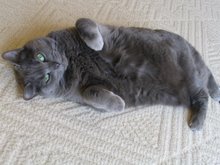Well, I've discovered my new favorite breakfast; scrambled eggs with Parmesan cheese, diced tomatoes, and sauerkraut. The combination of salty, sour, acidic, and creamy was exactly what I was looking for this morning. It's not that pretty, but the sauerkraut itself is a nice yellow/green color now. I took it out of the crock and put it in the fridge in a tupperware, so the fermentation is finally over. And I think I can promise that this is the last post with sauerkraut pictures (for now, mwahahahaha!).

I went to a minor league baseball game in Sacramento the other day, my first time. We were rooting for the Sacramento Rivercats, who are the minor league team for the Oakland A's. They lost, oh well. It was at Raley field, where they have lawn seats for $6 in back of the outfield, and it was a great way to spend a Thursday night. The stadium was surprisingly professional looking, with the regular vendors and everything, but it was all on a smaller scale. I'm going to see the Giants in San Francisco next weekend, so I'll be able to compare. Not counting Raley field, I've been to 5 baseball stadiums, which is quite a lot for someone who isn't really a big baseball fan. Shea Stadium (New York Mets), Fenway Park (Boston Red Sox), Busch Stadium (St. Louis Cardinals), Three Rivers Stadium (Pittsburgh Pirates), and Citizens Bank Park (Philadelphia Phillies). Now I get to add AT&T Park to the list. What a terrible name. I don't know which is worse, AT&T Park, or Citizens Bank Park, ick.

Here's a sneak peek of the weaving project. No details until it's done, sorry.



I went to a minor league baseball game in Sacramento the other day, my first time. We were rooting for the Sacramento Rivercats, who are the minor league team for the Oakland A's. They lost, oh well. It was at Raley field, where they have lawn seats for $6 in back of the outfield, and it was a great way to spend a Thursday night. The stadium was surprisingly professional looking, with the regular vendors and everything, but it was all on a smaller scale. I'm going to see the Giants in San Francisco next weekend, so I'll be able to compare. Not counting Raley field, I've been to 5 baseball stadiums, which is quite a lot for someone who isn't really a big baseball fan. Shea Stadium (New York Mets), Fenway Park (Boston Red Sox), Busch Stadium (St. Louis Cardinals), Three Rivers Stadium (Pittsburgh Pirates), and Citizens Bank Park (Philadelphia Phillies). Now I get to add AT&T Park to the list. What a terrible name. I don't know which is worse, AT&T Park, or Citizens Bank Park, ick.

Here's a sneak peek of the weaving project. No details until it's done, sorry.











































